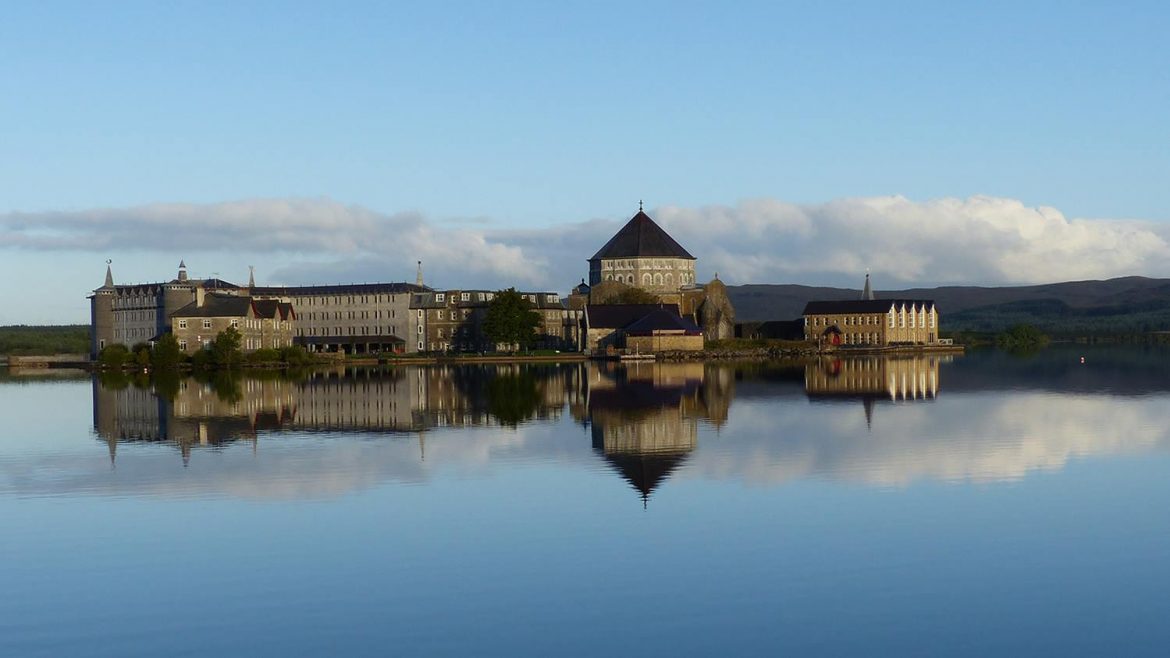Yesterday evening, the Diocesan Administrator of the Diocese of Clogher, Monsignor Joseph McGuinness, was the chief celebrant of Mass in Saint Patrick’s Basilica, at Saint Patrick’s Purgatory, (Station Island) Lough Derg.
Lough Derg is a remote place of pilgrimage dedicated to Saint Patrick. Since the time of Saint Patrick, millions of people have come to Lough Derg for prayer and solitude. Stories about Lough Derg span the centuries and have inspired writers as varied as Shakespeare, Dante, Yeats, Kavanagh and Heaney!
The Mass marks the beginning of the three-day pilgrimage season for 2017. This will last until 15 August next. During the Mass a new organ, to assist the various liturgies in the basilica, will be blessed and dedicated.
Monsignor McGuinness says; “One of the many legends which surround this ancient and sacred island of pilgrimage relates to the meaning of its name – Lough Derg. It is said that the name comes from the Irish Loch Dearg, meaning the “Red Lake”, because Saint Patrick, when he came to the lake, struggled against a fearsome monster that lived in its waters.
“Saint Patrick, having already dealt successfully with the entire national snake population, wasn’t to be bested by a water monster and it was duly slain. The waters of the lake were stained with its blood, and hence the “Red Lake”.
“Nowadays the waters may appear more grey than red, but the image of struggle which the story presents is no less real. For centuries hundreds of thousands of people have come to this place to struggle with the challenges of hunger, sleeplessness and physical penance. And all of you present here this evening are continuing that unbroken tradition.
“What you are doing is what would be called in modern terms counter-intuitive and counter-cultural. In societies of relative affluence such as our own, physical deprivation and discomfort are things to be avoided, not embraced. The notion of embracing the challenges of Lough Derg would appear to be nonsense. But it is glorious nonsense – it is the most wonderful witness to the most profound spiritual values.
“What this place bears witness to is the need for healing and hope in a wounded and broken world. From the mass horrors of war to the intimate hurts of our own hearts, the need for gifts of mercy, forgiveness, human empathy and generous love is unending. Pope Francis has famously described our Church as being like a field hospital, offering healing for the heart and balm for the spirit. If so, then Lough Derg provides some intensive care for the soul, and there are many, both believers and unbelievers who have found here a real sense of restoration and peace.
“I don’t know what each of you carry with you in your hearts this evening; I don’t know what joy you may be thankful for, or painful burden you may bear. But here is the place to bring it, where the needs of the body are disregarded and the yearnings of the spirit are addressed.
“May you find in this ancient place, as so many have done before you, an increase in your joy and thankfulness, and a relief from pain of heart and anguish of spirit. May the grace of the Purgatory of Saint Patrick give all of us ease with the greater and lesser purgatories that we must sometimes live through.
“Behind me in the sanctuary is a very large representation of the traditional Penal crucifix, sculpted by Imogen Stewart. One noticeable feature of it is that the halo surrounding Christ’s head is carved right through the wood, leaving an empty space. The sculptor has said that this space allows light to shine through, reminding us that there is no darkness, not even in the death of God’s Son, that the power of God cannot overcome. It is a great symbol of hope, at the heart of this island of hope.
“I wish for all of you, and for all who care for the pilgrims in this place, a share in the hope and healing that Christ promised us through the power of his Spirit. May we find it here, and with it, the blessing, protection and peace of God’s Spirit.”
The Basilica at Lough Derg, dedicated to Saint Patrick was built between 1925 and 1931 to the design of Professor William A Scott of University College Dublin. The basilica is built on ground reclaimed from the lake and its style is Hiberno-Romanesque. Saint Patrick’s was constituted a minor basilica by Pope Pius XI in 1931.
Further information on the island, as a place of prayer and pilgrimage, can be found on www.loughderg.org
Tags:







